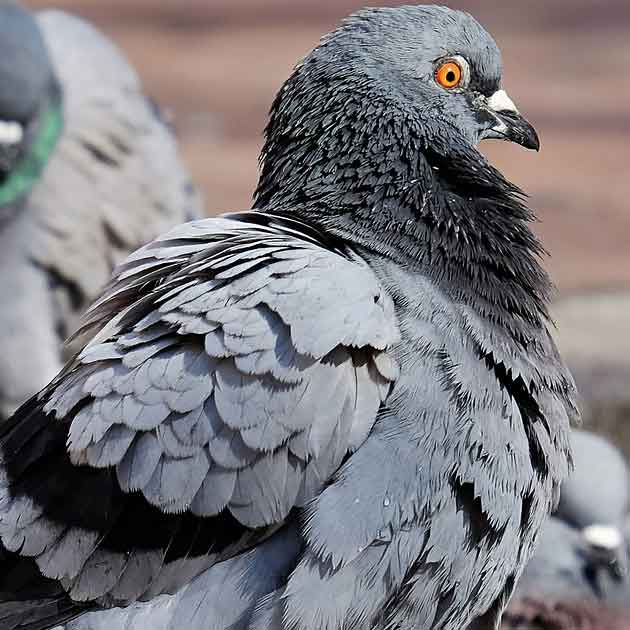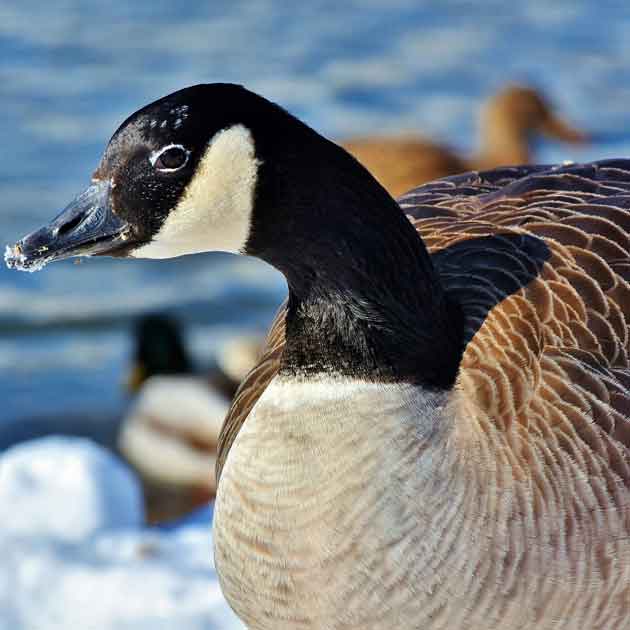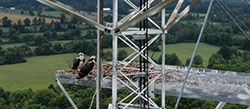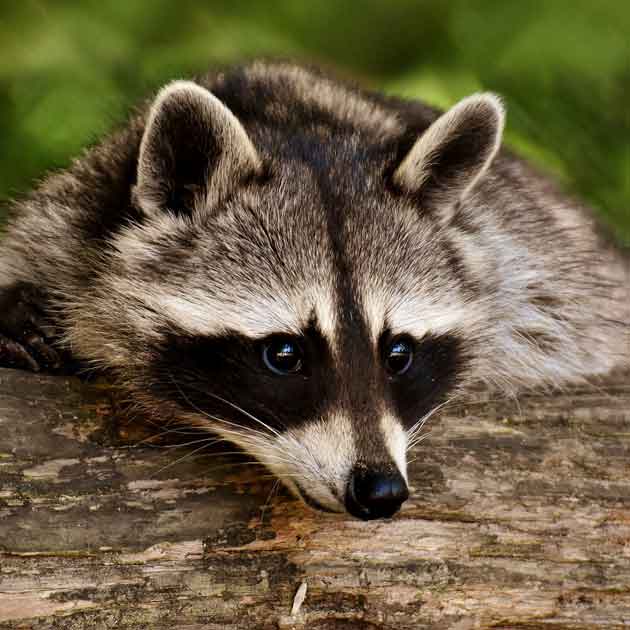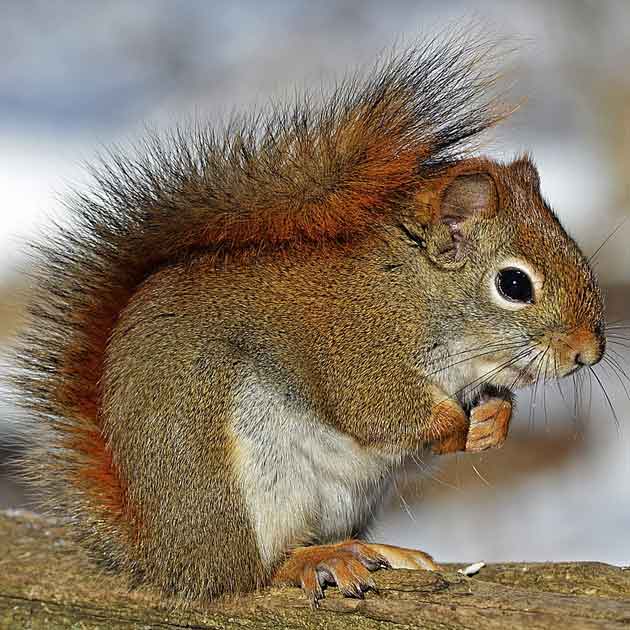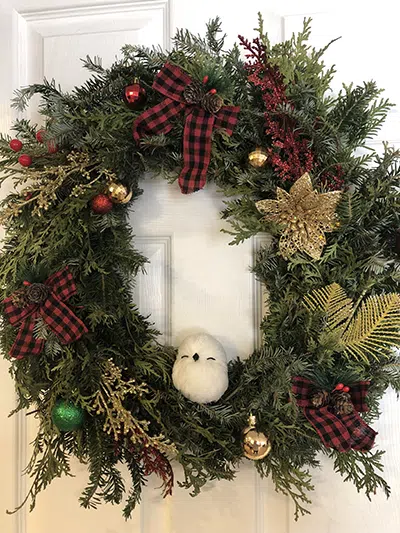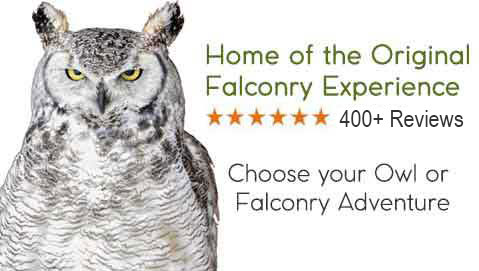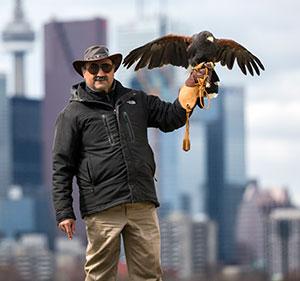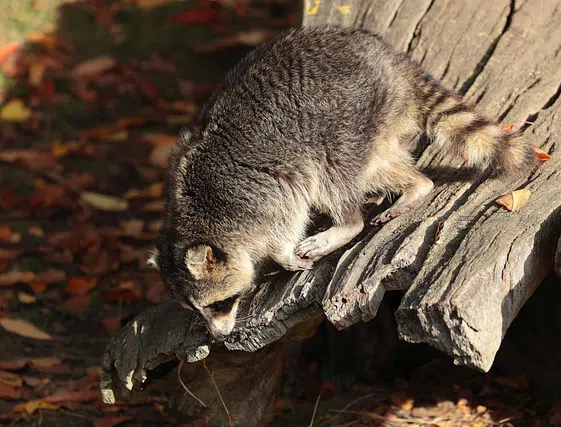BLOG | Hawkeye
News, little truths and wisdom regarding Pest Bird & Animal Wildlife Control, Falconry, and Birds of Prey....
Goose Control for Brampton Parking Lots
- Written by: Dan Frankian
Why Are Canada Geese Choosing Brampton Parking Lots?
In this case, geese aren’t looking for water — they’re looking for safety and food.

- Large, flat, open areas mimic a natural “safe zone” (geese can spot threats from all directions)
- Asphalt absorbs heat, making parking lots warmer during chilly spring mornings
- Landscaped islands, grassy borders, and mulched areas provide grazing and nesting space
- Quiet time windows (weekends, early mornings, holidays) allow undisturbed nesting
- Examples across Brampton:
- Commercial plazas
- Business parks
- Apartment or condo visitor lots
- Public facilities and industrial yards
- Parking areas in public parks such as Chinguacousy Park
What Kind of Damage Do Geese Cause in Parking Lots?
Corrosive Goose Droppings
- Acidic feces damage vehicle paint and concrete sealants;
- Droppings stain paving stones, entryways, and decorative features.
Blocked Drains and Ponding Water
- Nesting materials clog curb drains and catch basins;
- Standing water leads to slip and fall hazards and asphalt wear.
Accident and Liability Risks
- Goose droppings on painted lines and ramps create slippery and unsafe surfaces;
- Aggressive geese may cause injuries;
- Slippery feces are particularly risky in senior centers, healthcare facilities, and schools.
Aggressive Behaviour Near Entrances
- Nesting pairs may hiss, chase, or attack staff and customers;
- Increased complaints, bad online reviews, and workplace tension.
Delays for Operations & Deliveries
- Industrial and logistics yards may see vehicle movement delays due to flocks of geese blocking areas.
All of these issues impact reputation, safety, maintenance costs, and insurance risk — especially for commercial and municipal lots.
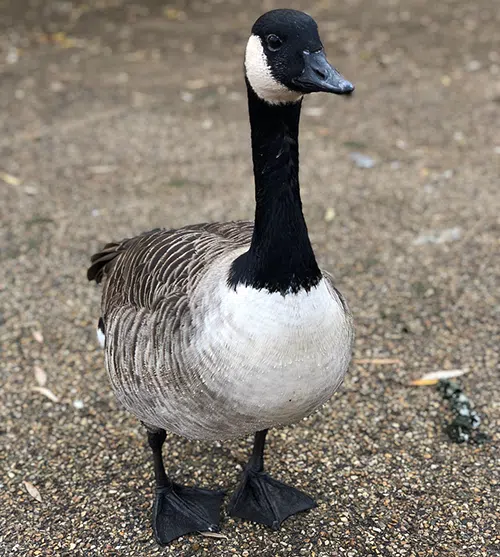
What Makes Goose Problems in Parking Lots Unique?
Unlike ponds or parks, parking lots are harder to manage due to public access, hard surfaces, and traffic flow:
- Geese may nest in awkward, hidden spots, such as under shrubs, medians, near dumpsters, or HVAC units;
- Accumulation of droppings on walkways and car doors is messy, slippery, and foul-smelling;
- Customer complaints or tenant frustration may impact reputation;
- Aggressive geese near nesting zones: will block access, hiss, chase, or even attack;
- Collisions with automobiles;
- Property damage due to corroded paint and steel railings and/or jam drainage grates from excessive goose droppings;
- Safety and liability risks are elevated, especially around seniors, kids, or during wet weather.
How to Get Rid of Geese from Vaughan’s Stormwater Ponds
- Written by: Dan Frankian
The city of Vaughan, like many other municipalities in the GTA, is seeing rapid and ongoing development and this means an increase in stormwater retention ponds in residential and commercial zones. Stormwater ponds attract Canada geese and other wildlife.

Why do Geese Flock to Vaughan’s Stormwater Ponds?
Stormwater ponds typically offer or are found near natural and man-made foods. Canada geese are adaptable and have learned to thrive alongside humans. Stormwater ponds afford geese the following benefits:
- Calm, open water and nearby grass;
- Fewer predators due to human traffic;
- Usually close to human housing developments and plenty of food sources;
Where are Stormwater Ponds Typically Found?
Common locations for stormwater ponds include:
- New subdivisions;
- Public parks;
- Industrial or retail landscapes;
- School zones with adjacent ponds;
Problems Caused by Geese in and Around Stormwater Ponds
- Heavy droppings on sidewalks, lawns, and nearby patios;;
- Aggression toward people and pets, especially during nesting season;
- Damage to turf and landscaped areas;
- Safety and sanitation risks near playgrounds, schools, or parks;
- Clogged drains or water flow disruptions from nesting materials;
- Long-term maintenance issues for HOAs and municipalities.
What You Can and Can’t Do About Geese in Stormwater Ponds
- The Migratory Birds Convention Act
Canada geese and their nests are protected under the Migratory Birds Convention Act. It is illegal to harm, move, or disturb nests and eggs without proper permits. In fact, ALL methods of goose control in Vaughan and other municipalities are subject to permits. - Hire a Goose Control Professional
A professional wildlife control company such as Hawkeye Bird & Animal Control can assist you with obtaining the necessary permits and offer trusted geese removal services for stormwater ponds, including custom solutions in Vaughan. - Landscape Modification
Changing the landscape to make it less appealing for geese to nest and raise a family is something you CAN do on your own to deter geese from ponds and you can do so without permit. For example, you can let grass grow to be 4 inches or longer or plant small shrubs around pond edges.
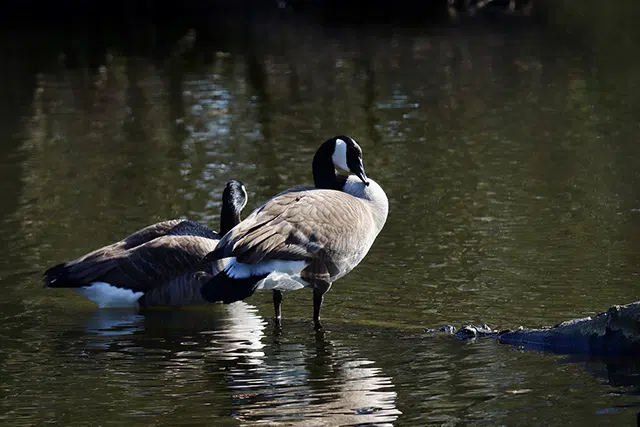
Strategies to Get Rid of Geese from Stormwater Ponds
Birds of Prey (Eagles)
- Falconry for goose control uses trained eagles flown by expert falconers;
- Geese instinctively fear birds of prey as they are natural predators and flee immediately;
- Birds of prey are especially effective over open stormwater pond areas with low vegetation and clear sightlines;
- Multiple flyovers condition geese to recognize the area as unsafe and permanently avoid the site;
- Falconry is safe, humane, and highly effective across residential, commercial, and municipal pond zones.
Trained Dogs
- Professionally trained dogs can be brought in to chase geese without physically harming them;
- Geese interpret dogs as natural predators and learn to avoid the area;
- Dog patrols are ideal for ponds near schools, parks, or subdivisions where falconry may be logistically limited;
- Works best with consistent patrols over several days or weeks.
Pond Wiring
- Pond wiring involves installing low wires or netting grids across smaller stormwater ponds;
- The obstruction makes it physically difficult for geese to land or take off from the water's surface;
- Wiring or netting is non-invasive and nearly invisible from a distance;
- Pond wiring can be especially helpful for long-term control at private and community ponds.
Habitat Modification
- Geese prefer open, flat spaces with short grass and a full view of approaching predators;
- Strategies include:
- Allowing grass to grow taller around pond edges;
- Planting dense shrubs or low fencing around key access points;
- Creating visual obstructions near entry paths;
- Makes the area less attractive for nesting;
- Often used alongside falconry or dogs for better and lasting results.
Remote-Controlled Vehicles (ROVs)
- Remote-controlled boats are used by trained professionals to create movement and unpredictability in the water;
- ROVs are used primarily at night when geese are on high alert and more vulnerable;
- Pyrotechnics (e.g., screamers or bangers) simulate danger and startle birds;
- These tools are useful for short bursts of activity but typically require reinforcement with falconry or dogs.
Pyrotechnics and Laser Devices (Night or Low-Light Deterrence)
- Both pyrotechnics and lasers are also deployed in low light conditions and require experienced operators;
- Green lasers are pointed in front of geese in zig zag patterns to create the illusion of movement or predator-like presence;
Read more: How to Get Rid of Geese from Vaughan’s Stormwater Ponds
Which Is the Best Bird of Prey for Goose Control?
- Written by: Dan Frankian
Canada Geese are increasingly becoming a nuisance across urban and suburban properties. Common goose complaints include excessive droppings, aggressive behaviour, and nesting in unsafe or high-traffic areas.
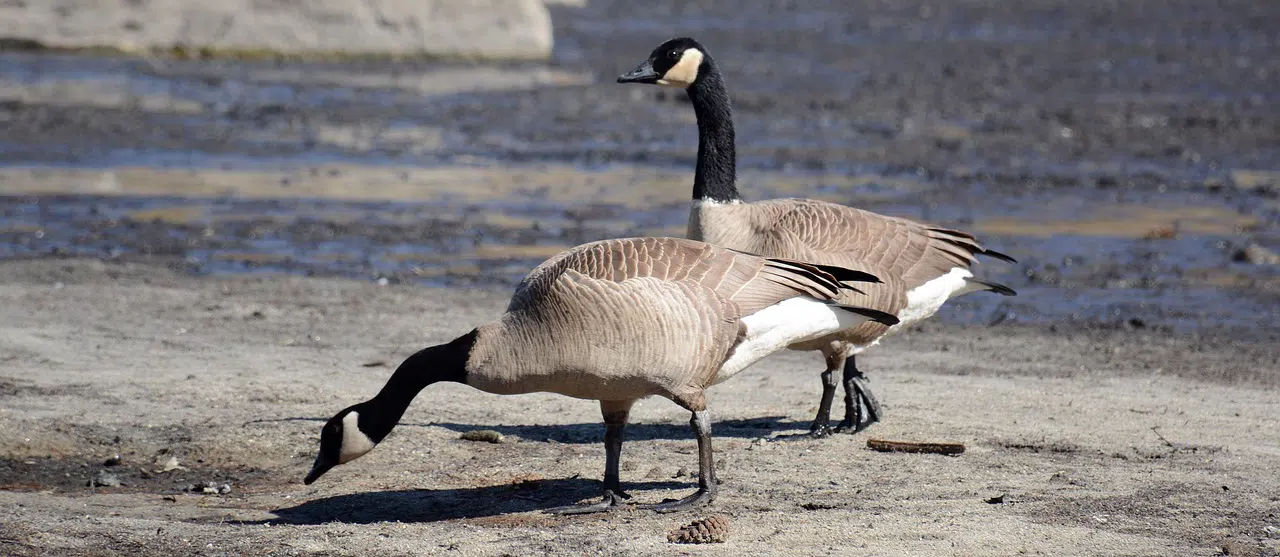
Canada geese are a common sight on rooftops of commercial buildings, in public parks, industrial yards, municipal green spaces, Toronto's waterfront, and on the shores of virtually all of Ontario's many lakes. So, what can be done about that? Let's explore why falconry for goose control (a humane, non-lethal method) is so much more successful than repellents and/or visual or sound-based deterrents.
Why Geese Are So Hard to Deter
First, we need to understand that geese are highly intelligent and social creatures that come with incredible homing instincts. When we hear homing instinct, we think of pigeons or doves... but geese are right up there. They learn and remember a migration journey thousands of miles long, from their spring nesting grounds to their winter home.
- Site Fidelity
Geese return to the same nesting site each year, as long as it is safe and can sustain a growing family; - Territorial Behaviour
Canada geese are highly territorial during nesting season, often causing conflict between bird and human; - Sheer Numbers
Geese travel and often nest in large flocks, creating widespread disruption; - Intelligence
Traditional goose deterrents lose effectiveness over time as geese quickly realize that they represent no physical danger (e.g., decoys, or noise, sprays).
How Birds of Prey Work as Natural Goose Deterrents
Birds of prey are natural predators and geese instinctively know that. Falconry for goose control takes advantage of the natural and inherent predator/prey relationship.
- Birds of prey tap into geese’s natural fear response;
- The presence of a predator (especially large and dominant birds like eagles) triggers immediate evacuation behaviour;
- No harm is done – it’s psychological intimidation, not physical capture;
- Repeated exposure builds a “conditioned avoidance response” in geese.
Birds of Prey Commonly Used for Bird Control
- Falcons
- Used in large open spaces, like landfills;
Used for gulls and ducks; - Not ideal for large, aggressive geese
- Used in large open spaces, like landfills;
- Hawks (e.g., Harris’s Hawk)
- Agile and able to navigate urban landscape, vineyards, and airport hangars;
- Commonly used in pest bird management;
- Not suitable for geese
- Eagles (e.g., Bald Eagles)
- Strong presence and size
- Best suited for intimidating and dispersing geese
- Particularly effective in open areas like airports, large lawns, rooftops, and parks
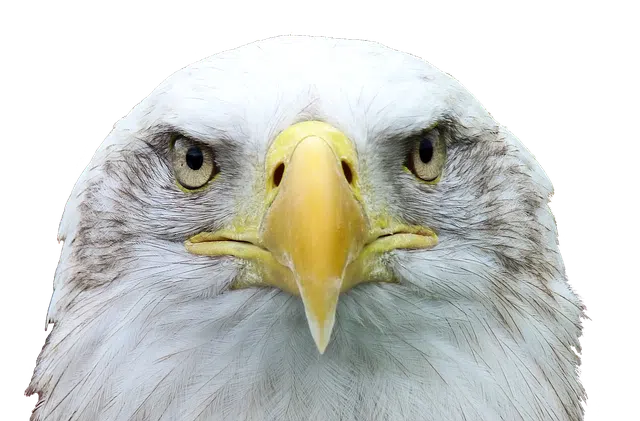
Why Eagles Are the Best Bird of Prey for Goose Control
- Intimidation Factor
Eagles are a top predator, able to take down a goose (although that is not the objective). Geese instinctively fear eagles; - Visibility
Eagles are large, dark raptors visible from long distances and instantly recognizable; - Versatility
Eagles are suited to work in open spaces (parks, rooftops, or runways) and complex environments; - Proven Effectiveness
Repeated eagle deployments create lasting avoidance behavior by Canada geese; - Low Disruption
Falconry using eagles produces no noise or mess; eagles blend into the environment and are safe around the public when flown by an experienced falconer.
Read more: Which Is the Best Bird of Prey for Goose Control?
Are Raccoon Repellents (Mothballs, Ammonia, Lights) Effective?
- Written by: Dan Frankian
Toronto, Vaughan, Mississauga and many other communities in the GTA report a growing number of raccoon intrusions. Often, our first impulse is to search online for what repels raccoons and for DYI solutions and home remedies. The Internet is full of suggestions on how to get rid of raccoons - but how well do these methods really work? And are they even legal or safe? *Spoiler Alert* Most of these crafty solutions offer false hope and very limited success, if any.
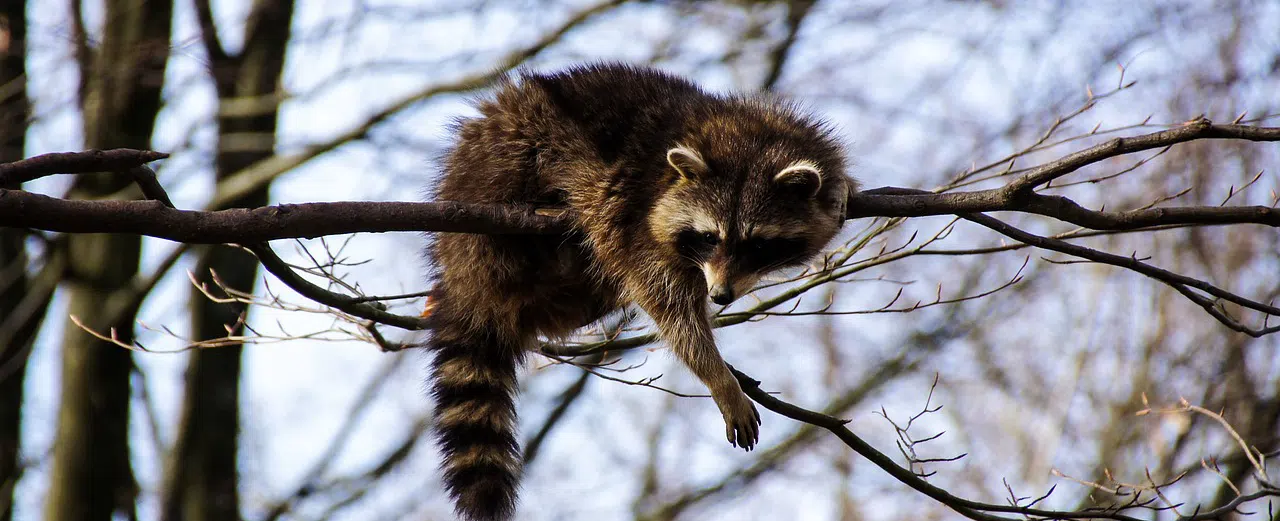
Do Raccoon Repellents Actually Work?
The short answer is no. Some home remedies have very short lived success but none of the populare DIY methods work long-term or solve the recurring raccoon problem.
Mothballs
- Why people try it:
The strong smell is thought to repel animals. - Reality:
Outdoors or in ventilated areas, the smell dissipates quickly. Raccoons usually ignore it. - Health concern:
Mothballs are classified as a pesticide and are toxic to humans and pets. They are illegal to use for wildlife in some provinces.
Ammonia-Soaked Rags or Open Containers
- Why people try it:
The scent of ammonia is believed to mimic predator urine or that strong fumes will cause discomfort. - Reality:
Ammonia proves only mildly effective for a few hours. The smell evaporates quickly or is washed away by rain. - Risk:
Inhaling ammonia indoors or in crawlspaces poses safety concerns.
Motion-Activated Lights or Sprinklers
- Why people try it:
Sudden movement or light may startle wildlife. - Reality:
Lights may work for a few nights at best, sprinklers are unlikely to work at all. Raccoons actually love water. Urban raccoons are smart and quickly learn to ignore such measures, especially when they’re used in predictable patterns or are poorly placed.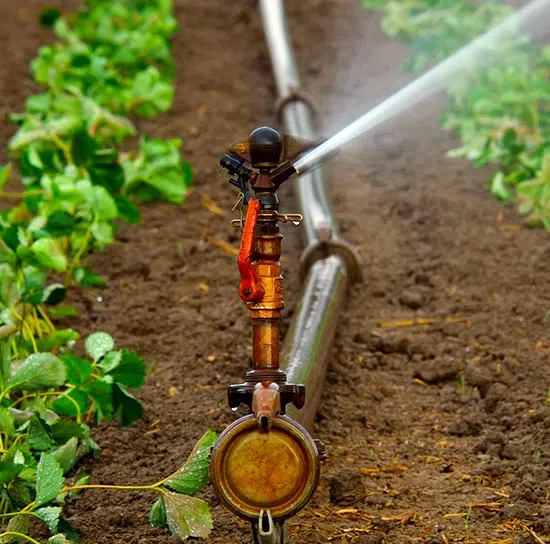
Commercial Ultrasonic Devices
- Why people try it:
They're often sold online and marketed as “eco-friendly” or “high-tech” pest deterrents. - Reality:
There's no credible scientific evidence that ultrasonic noise has a consistent effect on raccoons. They may initially react but adapt quickly. Again, they are highly intelligent and recognize quickly that these devices do not pose any physical danger.
Predator Urine (Coyote, Fox, etc.)
- Why people try it:
It is believed to trigger a strong fear response in raccoons. - Reality:
Raccoons in the GTA are not easily intimidated by scent alone—especially in high-traffic, food-rich areas like neighbourhoods or commercial dumpsters. - Exception:
The scent of a male raccoon WILL terrify a young mother with kits and she will move her offspring to a new site. - Short shelf life:
This requires constant reapplication; rain or humidity tends to render predator urine useless.
Peppermint Oil or Strong Essential Oils
- Why people try it:
These are common in natural or “green” DIY solutions. - Reality:
Essential oils may repel raccoons briefly in enclosed spaces (e.g., under a sink or crawlspace), but are mostly ineffective for attics, rooftops, chimneys, in large spaces, or outdoors. - False belief:
Many natural blogs promote this without proven results.
Read more: Are Raccoon Repellents (Mothballs, Ammonia, Lights) Effective?
Raccoon Nest or Den Removal in the GTA
- Written by: Dan Frankian
We know Toronto has been dubbed "Raccoon Capitol of the World" but communities all across the GTA are also experiencing Increased raccoon nesting in attics, chimneys, under decks, and garages. With summer being prime time for juvenile raccoons stepping out into the world and seeking adventures, now is a great time to get rid of existing dens on your property and get serious about raccoon control in Toronto.
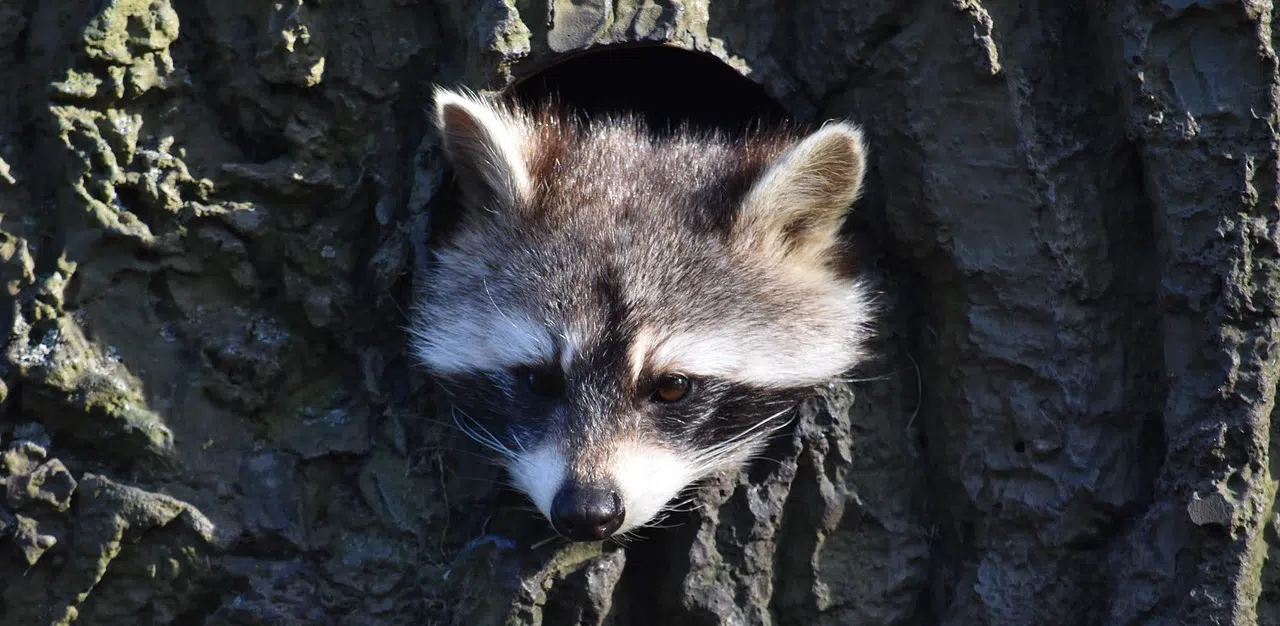
Many homeowners don't realize that raccoon nesting (or denning) equals long-term infestation risk, extensive property damage and serious health hazards.
Where and How Raccoons Build Their Nests
Here’s how to find a raccoon den:
-
Indoor Nest Locations:
-
Attics or crawl spaces (especially in insulation or dark corners)
-
Chimneys without proper caps
-
Wall voids or dropped ceilings in garages, sheds, or commercial spaces
-
-
Outdoor Den Locations:
-
Under decks or porches
-
Inside sheds, behind HVAC units, or under staircases
-
In commercial dumpsters or rooftop ductwork
-
In or on abandoned machinery
-
-
Signs of a Raccoon Den Nearby:
-
Flattened insulation or debris piles
-
Torn paper, leaves, plastic bags, attic insulation, etc.
-
Droppings nearby and a strong, musky odour
-
Visible baby raccoons (kits)
-
Challenges of Raccoon Nest Removal
- Unseen Entry Points
- Raccoons may enter through gaps in soffits, vents, shingles, siding, or commercial rooftop openings.
- Homeowners often patch visible entry points and leave others open, allowing the animals to return.
- Dealing with Baby Raccoons (Kits)
- Most nests contain kits during spring and summer.
- Newborn kits are silent, immobile, and hidden—removing the mother raccoon and/or the nest alone leaves the babies to die of starvation, causing new issues (decomposition, odor, and insect infestation).
- Aggressive Adult Raccoons
- A mother raccoon will defend her nest aggressively.
- Homeowners attempting to enter attics or crawlspaces risk bites, scratches, and exposure to disease such as rabies, roundworm, or other parasites.
- Limited Accessibility
- Nests are often located in tight, high up, or dangerous spaces— under roofs, behind walls, or in narrow crawlspaces.
- Many homeowners don’t have the proper safety gear, tools, disinfectants, or ladders to investigate or get rid of a raccoon nest safely.
- Legal & Ethical Limits
- It is illegal to trap and relocate wildlife farther than 1 km from the capture site in Ontario.
- Inexperienced trappers may remove adult raccoons, but leave kits behind.
Rooftop Goose Control in Vaughan
- Written by: Dan Frankian
You'd expect Canada geese to invade our beaches and parks (and they do!) but you rarely look up to discover geese nesting on rooftops. You're not alone. We don't usually think of geese up high, but it actually makes sense, particularly, in Vaughan's industrial areas with lots of flat roofs. Let's explore this often overlooked issue of bird control for industrial, commercial, and residential flat roofs all across the GTA.

Why Rooftops Attract Canada Geese
- Most people associate geese with grassy parks and ponds, but rooftops—especially flat, open commercial roofs—are ideal for geese.
- Key factors that make Vaughan rooftops appealing:
- Height offers protection from ground predators;
- On cooler days, HVAC vents and reflective surfaces offer some added warmth;
- Rainwater often pools on flat roofs and affords a quick drink;
- There is little to no human traffic or interference;
- Many of Vaughan’s industrial buildings, malls, and offices offer the perfect combination of space and security for geese.
Hidden Risks of Rooftop Goose Roosting
- Accumulated droppings pose a health hazard, such as slip and fall accidents and/or the introduction of pathogens;
- Ventilation systems can become contaminated and threaten the health of building occupants, particularly those with compromised immune systems or respiratory issues;
- Geese droppings also cause corrosion and damage to the roof itself;
- Clogged drains from droppings, feathers, and nesting materials can lead to water pooling and potential flooding that leads to costly roof damage;
- Spring nesting and overprotective nesting pairs cause delays to roofing work, HVAC servicing, or solar panel maintenance;
- Legal complications due to Canada geese being protected by the Migratory Birds Convention Act;
- Improper geese removal methods in Vaughan can lead to fines or lawsuits.
Common Rooftop Goose Deterrents to Avoid
- Audio deterrents, visual decoys (like fake owls or predator balloons), sprinklers, and motion sensors are largely ineffective;
- Geese are intelligent and highly adaptable; they quickly learn to ignore these devices;
- Egg oiling or addling also doesn’t provide immediate results:
- Geese continue to sit on unviable eggs and will be around all summer;
- It may take years for them to abandon the site in spite of no eggs hatching;
Get Rid of Raccoons from Homes Near Pickering’s Ravines and Green Spaces
- Written by: Dan Frankian
Pickering and Ajax are two communities located only half an hour east of Toronto and known for some of the best hiking and cycling trails, lush ravines, and a beautiful waterfront. Forested neighbourhoods near Rouge Park, Altona Forest, or Duffins Creek Valley offer charm and an almost rural feel but they also act as natural raccoon highways, bringing animals from the wild to residential and commercial areas—especially in the fall as raccoons seek warm dens for overwintering.
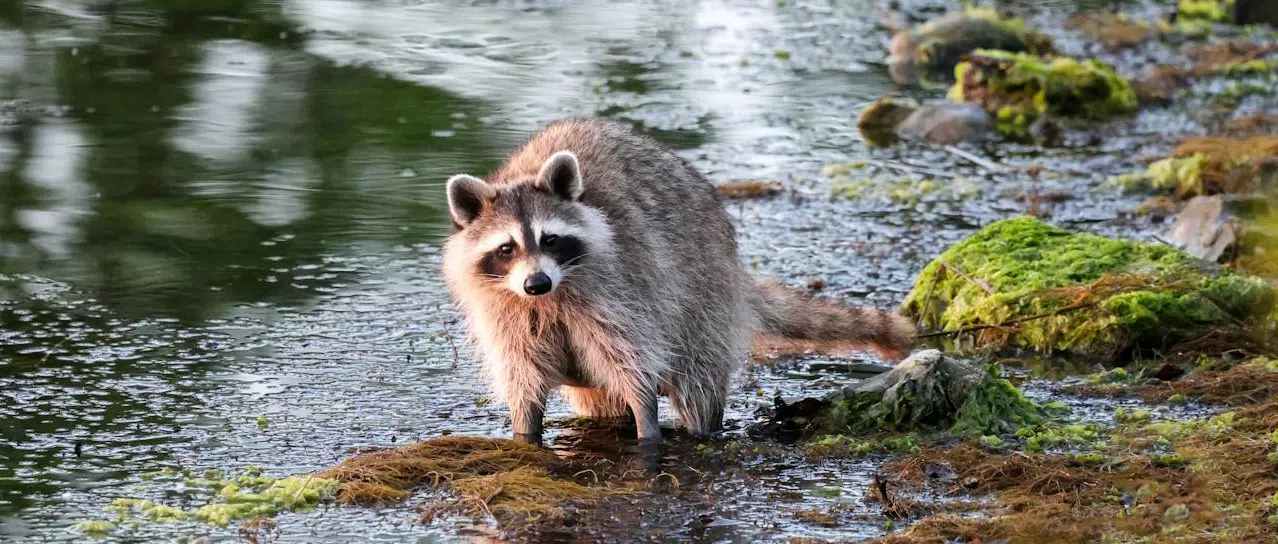
Due to loss of habitat and their incredible intelligence and adaptability, raccoons don't stay in the forest - they move into your home.
Why Fall Triggers Raccoon Infestations from Green Spaces
Survival Instinct
Fall is the season to prepare for long and often harsh Ontario winters. Here's what raccoons are looking for:
- Warm and secure shelter to build a winter den;
- Consistent food sources, often provided by unwitting humans (garbage, compost, outdoor pet food, etc.).;
- Quiet places with little human interference; this could be garden sheds and other outbuildings, attics, storage units, or under decks and porches;
The Urban-Forest Edge Effect
Neighbourhoods that border ravines are highly attractive due to the availability of water, seclusion, and food. Raccoons are rather opportunistic creatures and much prefer a quick and easy meal over one that needs to be chased down. Hence, they have learned to appreciate human offerings and view areas near the forest edge as ideal habitats.
Raccoon Hotspots in Pickering: High-Risk Ravine-Edge Zones
Residents and property managers in the following areas see a stark increase in raccoon activity once autumn has arrived: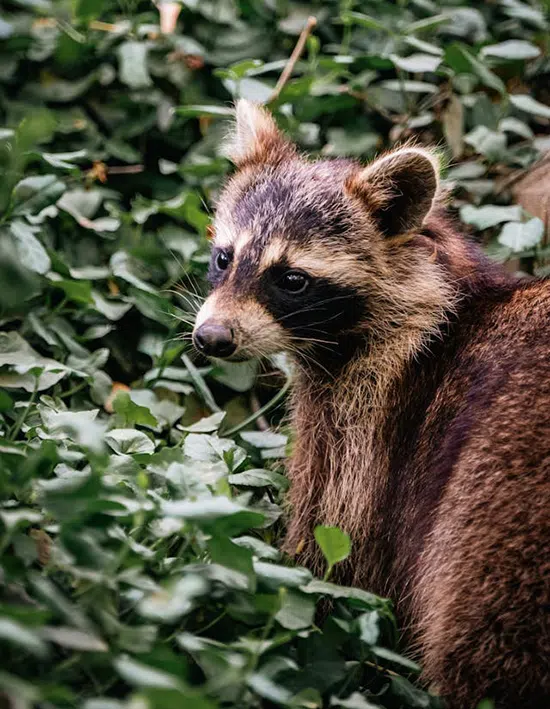
Rougemount / Highbush
- Proximity to Rouge National Urban Park and a natural wildlife refuge;
- Older homes, featuring large lots and mature trees;
- Raccoons can easily access rooftops via fences and branches.
Altona Forest / Amberlea
- Homes and schools are bordering dense forest;
- Green bins, school dumpsters, and open vents make for common entry points;
- We receive many reports of raccoons entering attic crawlspaces.
West Shore / Bay Ridges
- Close to Frenchman’s Bay and marshland trails;
- Ideal for raccoons nesting under sheds, decks, or boathouses.
Duffins Creek Corridor
- New developments + preserved lands = wildlife mixing with homes;
- Commercial developments near hydro corridors and wooded lots are also affected.
Why Raccoons Easily Move Between Ravines and Homes
- Unlike skunks or groundhogs, raccoons are motivated and agile climbers: They use fence lines, tree branches, and even utility poles to cross from ravines into backyards and rooftops;
- Raccoons are also clever and strong and readily rip soffits, pry open vents, and dislodge shingles to gain access to homes.
- Temporary exclusion methods fail when there’s a ready refuge in nearby woods.
Read more: Get Rid of Raccoons from Homes Near Pickering’s Ravines and Green Spaces
Why Detached Homes in Toronto Face a Higher Risk of Raccoons in the Fall
- Written by: Dan Frankian
Especially Toronto's older, well established neighbourhoods see a scurry of raccoon activity once fall arrives. Toronto's detached homes, often surrounded by trees and green space, are particularly attractive to raccoons looking to find a secure and warm space to overwinter.
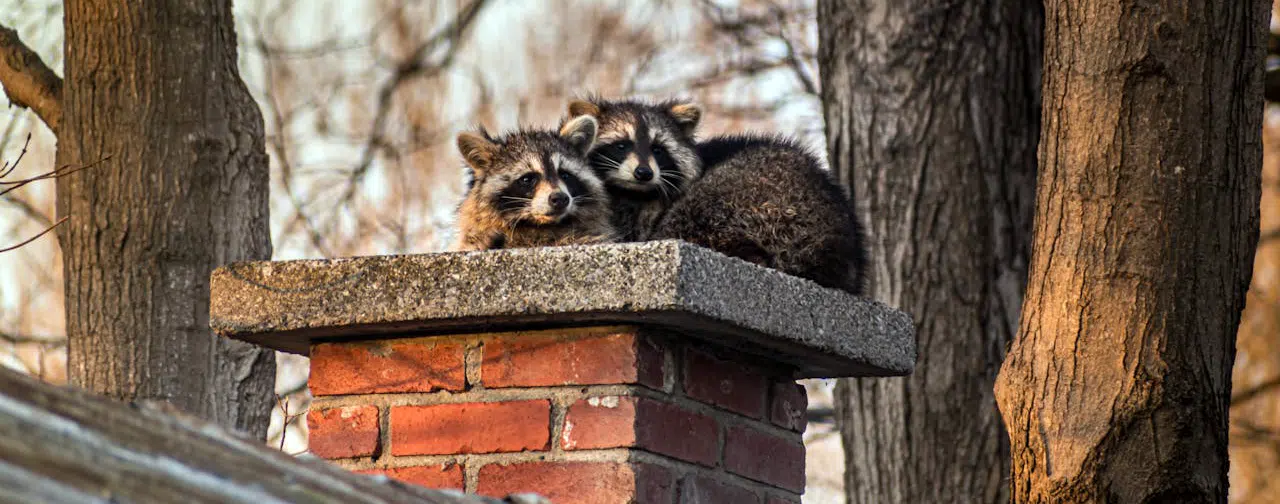
This article explains why these homes are high-risk, what homeowners can do, and why permanent raccoon removal in Toronto is often necessary.
Why Fall Brings Raccoons Closer to Homes
- Winter is Looming
Fall is the preparation phase for surviving Toronto's harsh winter; - "Mi Casa es Su Casa"
Urban raccoons have adapted to treat your home as part of their natural habitat and once inside, will not leave voluntarily; - Winter Denning and Torpor
While raccoons don't actually hibernate, they do slow down considerably and enter a phase of torpor. Having a a warm and sheltered space to settle down in is essential;
Autumn is the last opportunity to act before winter nesting begins and you're stuck with uninvited house guests for months to come.
What Puts Detached Homes at a Higher Risk Compared to Townhomes?
- More Entry Points
- Detached homes have more independent architectural features, such as multiple gables, vents, chimneys, and soffits.
- Aging roofing materials, unsealed attic vents, and gaps in eaves make perfect access zones.
- Garages and sunrooms are often overlooked but accessible.
- Surrounding Vegetation
- Trees, climbing vines, and fences serve as natural ladders to roofs.
- Detached homes are usually landscaped, increasing raccoon mobility.
- Unpruned branches near rooftops can bridge the gap for entry.
- Outdoor Waste Storage
- With no shared waste system, detached homeowners often leave bins outdoors overnight.
- Raccoons target unsecured compost bins, pet food, birdseed, and fallen fruit.
- Unlike condos, there’s less deterrence from noise, lighting, or human traffic.
- Lack of Regular Exterior Surveillance
Read more: Why Detached Homes in Toronto Face a Higher Risk of Raccoons in the Fall
Get Rid of Raccoons around Etobicoke Medical Clinics
- Written by: Dan Frankian
Unsanitary conditions are a problem in any scenario - but when it comes to medical facilities, they are downright dangerous and can even be life threatening. Etobicoke, like many areas across the GTA, has seen a stark increase in raccoon population and activity, and medical clinics and healthcare facilities are no exception.
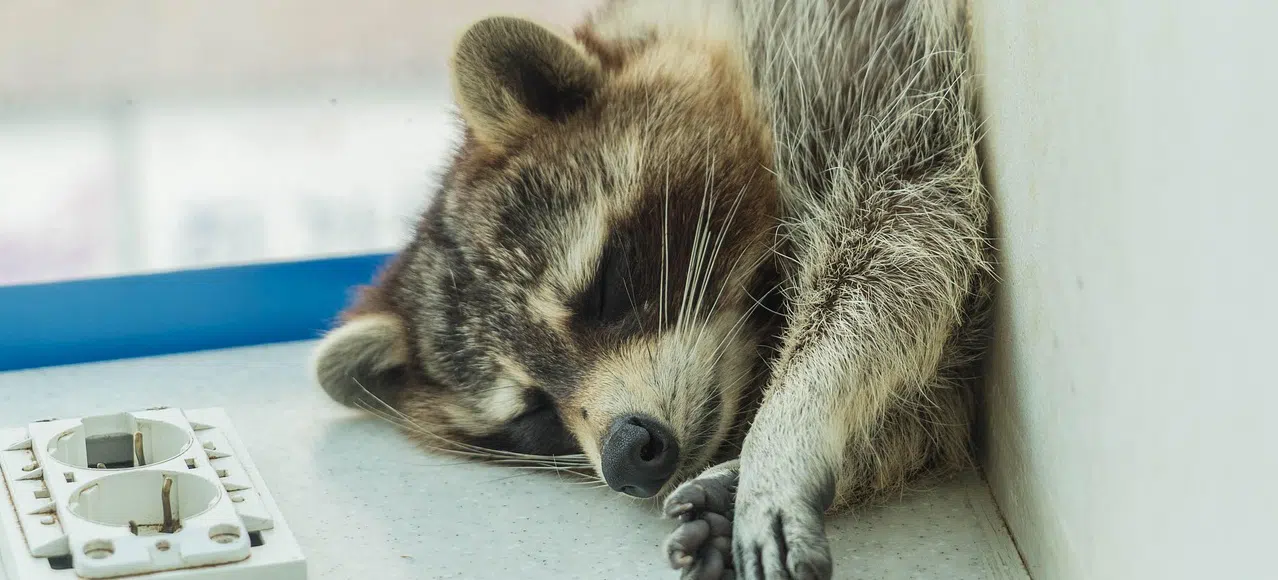
Sensitive environments like doctor's offices, health clinics, hospitals, or medical labs have to have zero tolerance for wildlife presence due to the extreme health, hygiene, and legal risks. The potential consequences of introducing pathogens in these places and around people with already compromised immune systems or general health are unthinkable.
Read on and learn how to get rid of raccoons around these and other facilities in Etobicoke - from simple trapping and releasing to permanent raccoon removal. Other Toronto area wildlife control services for healthcare buildings cannot offer the option of permanent removal - but Hawkeye Bird & Animal Control can and does.
Why Medical Clinics and Childcare Buildings Attract Raccoons
- Architecture
Medical buildings often feature older rooftops, ceiling tiles, or HVAC openings and offer easy entry points for raccoons and other wildlife; - Food Availability
Medical waste bins, food storage, and kitchen areas attract raccoons; - Human Traffic
Lower activity in the evenings and during weekends makes these buildings perfect for nesting; - Hidden Areas
Crawlspaces, attics, and drop ceilings offer warm, quiet nesting zones.
 Hidden Dangers of Raccoons in Healthcare Facilities
Hidden Dangers of Raccoons in Healthcare Facilities
- Biohazard Concern
Raccoon feces contains Baylisascaris procyonis (roundworm), Leptospirosis, and other parasites, which can infect and greatly endanger immunocompromised patients; - Infection and Contamination
Hair, urine, and fleas easily contaminate sterile areas and equipment; - Chewed Medical Wiring
Raccoons can cause a lot of damage to healthcare facilities, including chewed wiring, which can impact patient monitoring or life-safety systems; - Disruption of Daily Operations
Noise and odor can interrupt clinical care and nap hours; - Regulatory or Legal Implications
The presence of raccoons leads to increased risk of public health inspections, fines, or temporary shutdowns.
What’s at Stake – Health, Compliance & Public Trust
- Public Health Ontario can shut down facilities if contamination or wildlife risk is observed;
- Patients may report facilities for unsafe conditions;
- Insurance rarely covers wildlife-related contamination or closures;
- Your reputation is at risk, especially in regulated industries where safety and cleanliness are mandatory.
Why Temporary Fixes Don’t Work in Regulated Facilities
Read more: Get Rid of Raccoons around Etobicoke Medical Clinics
How to Protect Your Crops from Canada Geese in the GTA Greenbelt
- Written by: Dan Frankian
As we continue to learn how detrimental to our health processed foods are, protecting local food production is becoming more important and more necessary. Ontario farmers work hard all summer long, but they are often faced with significant challenges when it comes to pest birds, such as Canada Geese. If you are a farmer and find your fields invaded by geese, this article is for you.
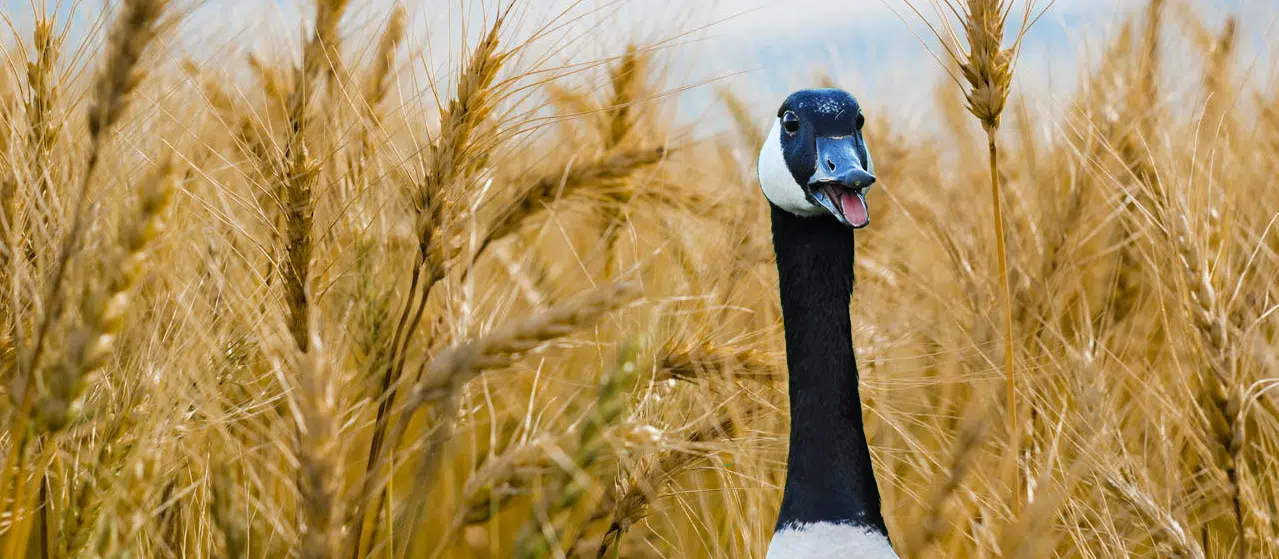
How Can I Protect My Crops from Canada Geese in the GTA Greenbelt?
The short answer is by partnering with an experienced goose control company and by implementing a multi-faceted, adaptive geese management plan for your farm that integrates a number of deterrence methods over months or even years. But, let's look at this in more detail:
The Importance of Ontario's Greenbelt
- “Greenbelt” is a general term used to describe natural, undeveloped, and/or agricultural lands that surround urban areas. These lands may include open spaces, parks, forests, farms, vineyards, and wetlands. Currently, the Greenbelt protects over two million acres of land and nearly 40% of this acreage is farmland.
- Greenbelt areas act as natural buffers during wildfires and provide essential groundwater during droughts. They add to biodiversity, help balance ecosystems, and offer refuge in nature for many of us city dwellers. And, much of our local, organic food is grown here.
The Impact of Canada Geese on GTA Greenbelt Agriculture
Large flocks of Canada geese are a familiar and often welcome sight for many, signaling the arrival of spring and summer but their invasion of agricultural fields can be devastating to the crops, the farmers, and by extension our local food supply. Geese foraging in large numbers are capable of consuming 30 acres of wheat, cover crops, or alfalfa fields in just a day or two.
- Loss of Production
A large flock of geese can decimate entire fields and render the harvest moot; - Financial Loss
Ontario farmers are already stretched to the limit - a single season of crop destruction and the cost of replanting can spell the end of century old family farms; - Quality Degradation
Even if the crop isn't outright destroyed, grazing geese still diminish crop yield and quality;
Why Canada Geese Are a Growing Problem for Greenbelt Farmers
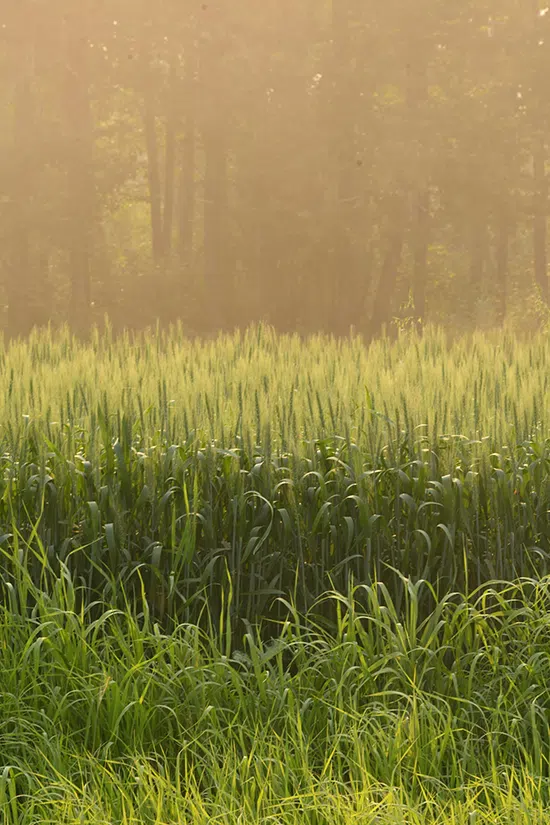 General Overpopulation of Canada Geese
General Overpopulation of Canada Geese
As geese are adapting to life alongside humans and learn to not just survive but thrive in urban environments and surrounding greenbelts, the geese population is exploding. More goslings than ever survive their first few years of life and reproduce;- Goose Behaviour & Diet
Canada geese show a distinct preference for tender, young crop shoots and grasses;
Due to their high metabolic rate geese have a constant need for foraging;
Geese have an intricate social structure and gather in large flocks which cause extensive damage quickly;
Farm fields offer open areas and a clear line of sight, often with nearby access to water; - Seasonal Vulnerabilities of Crops
Spring: Emerging seedlings (corn, soybeans, and wheat) are available early and highly palatable;
Summer: Geese graze on leafy greens, specialized crops, and newly harvested fields;
Fall/Winter: Resident geese graze on winter wheat, cover crops, and gleanings; - Impact Beyond Consumption
Even smaller flocks damage plants and soil by trampling and compaction:;
Droppings can contaminate crops, affecting marketability and food safety;
Agricultural fields inadvertently provide ideal goose habitats.
The Impact of Geese on Crops
- Direct Damage
Grazing, trampling, uprooting seedlings - crop destruction in the current year; - Indirect Damage
Soil compaction, fecal contamination, and the introduction of pathogens can threaten future growing seasons; - Economic Costs
Yield loss and replanting costs plus insurance complications put further strain on farmers;
Legal Limitations: What Farmers Can and Can’t Do
- Canada geese are protected under the Migratory Birds Convention Act (MBCA);
- It is illegal to harm geese, their eggs, or nests without a permit;
- ALL Canada goose control methods require a permit from the Canadian Wildlife Service before work begins;
- Failure to obtain the necessary permits will result in charges and fines.
Proven Strategies for Goose Control on Farmland
Falconry (Birds of Prey)
- Falconry is the most natural and effective agricultural goose deterrent;
- Geese recognize raptors as predators and instinctively avoid areas where eagles are active;
- Falconry for goose control is particularly effective during planting, early growth, and pre-harvest stages.
Trained Working Dogs
Read more: How to Protect Your Crops from Canada Geese in the GTA Greenbelt


